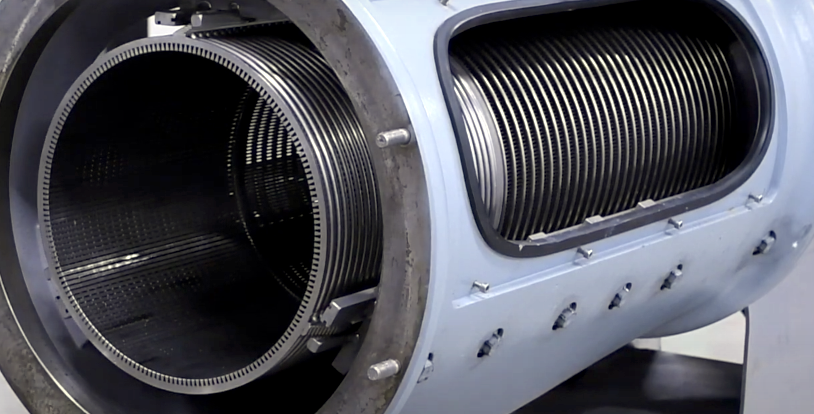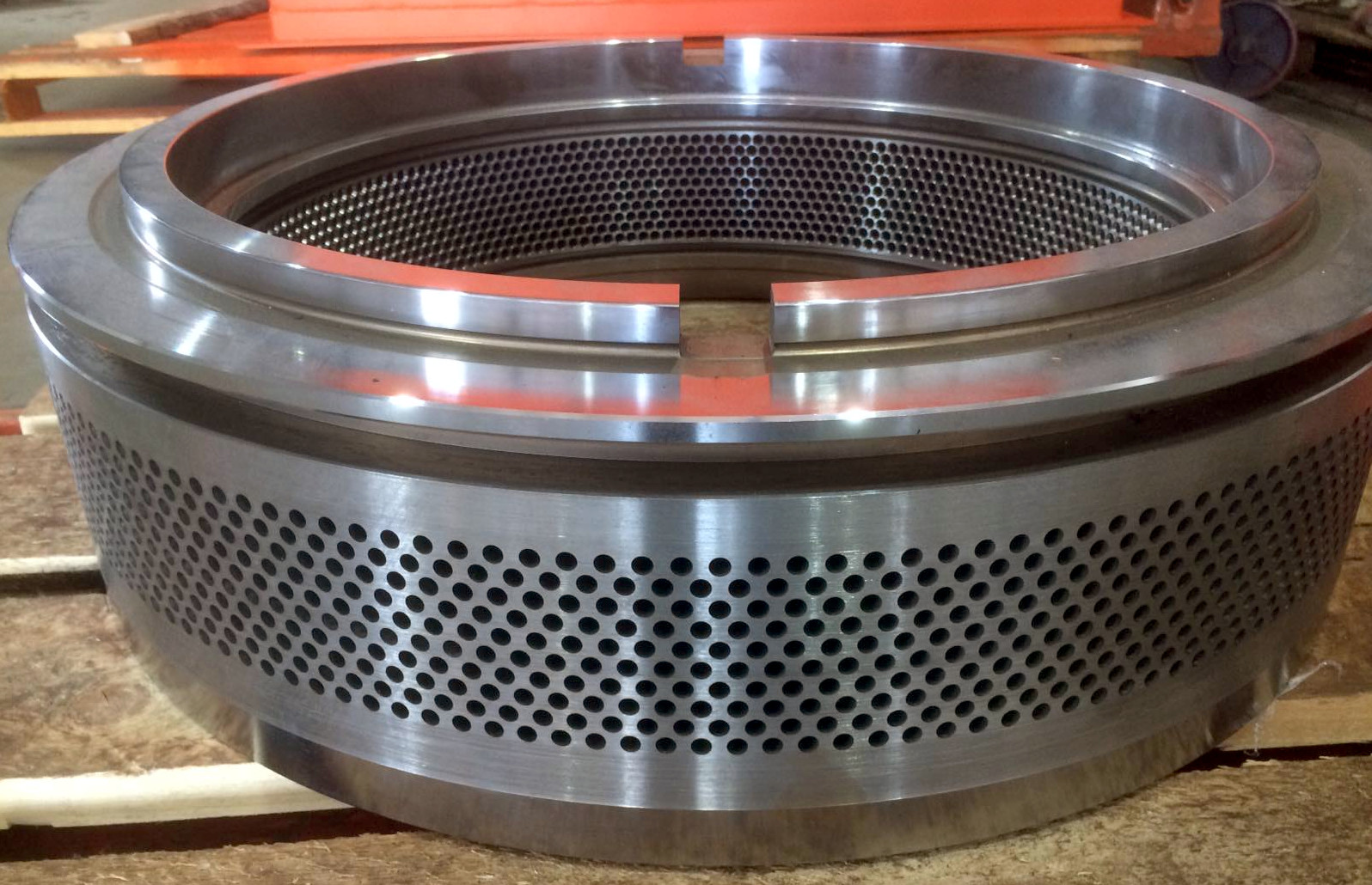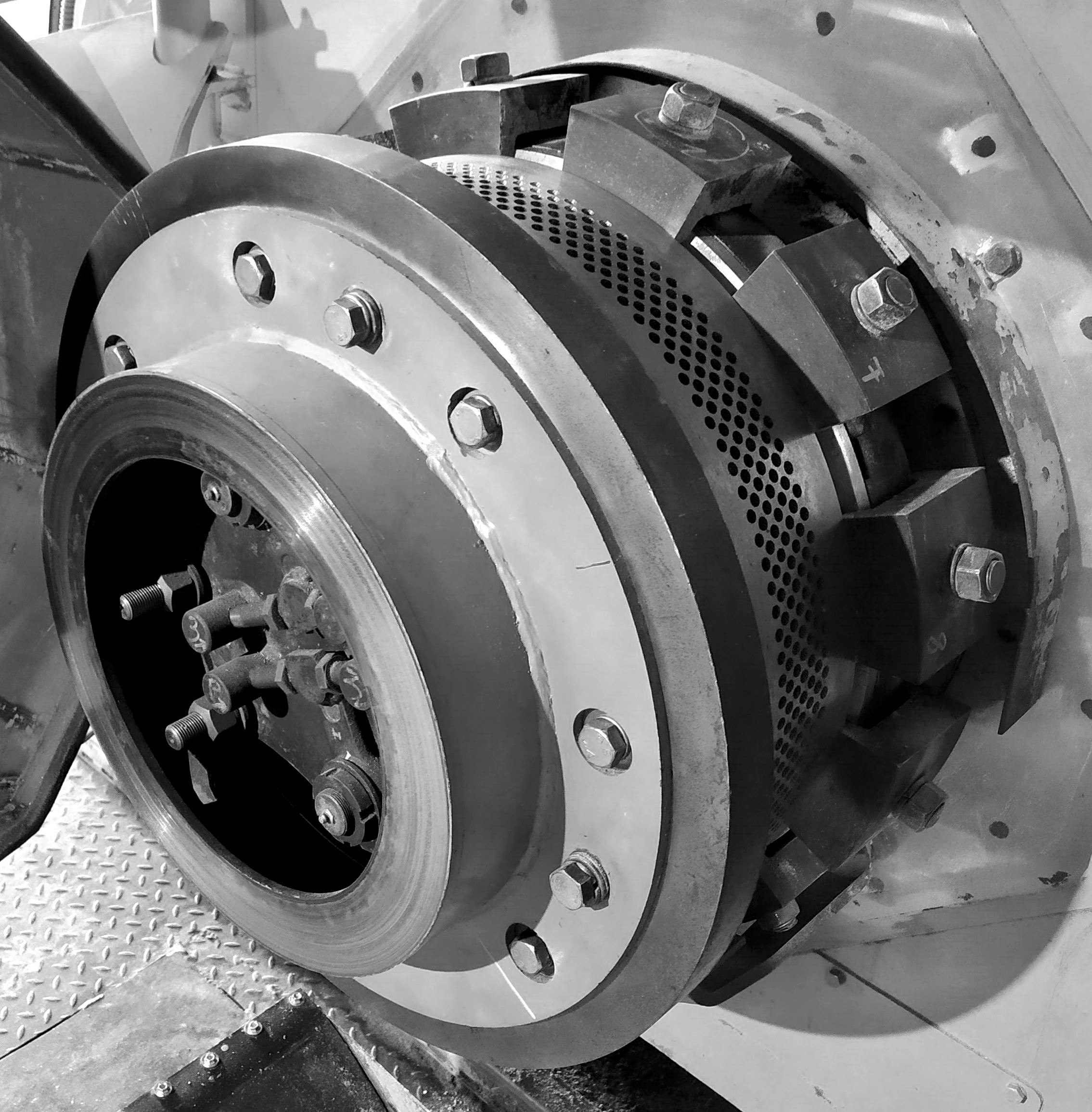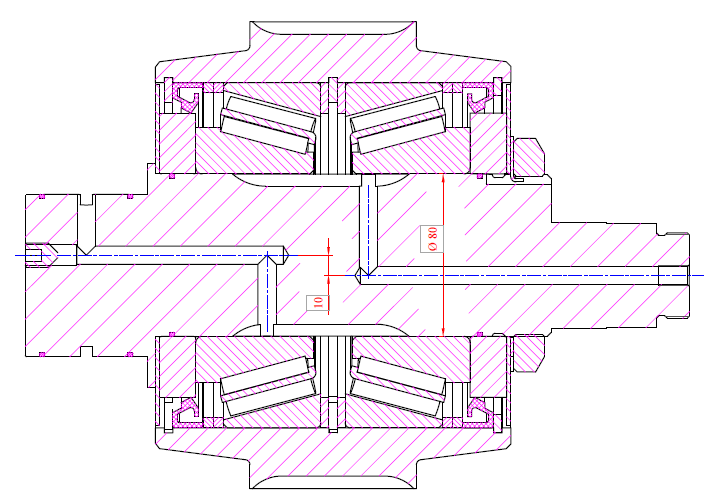Most pellet mills, briquette presses, extruders, and similar machines include a reduction drive using a gearbox, pulleys, and other mechanisms. The linear speed of the roller along the track of the ring die is limited by several factors. The pressing of porous organic material in pellet mills intentionally occurs in multiple stages.
At the first contact with the rollers, air is expelled from the gaps between the particles and they undergo partial deformation. Too high a speed can cause sawdust to be blown away, leading to chaotic movement and uneven feeding, significantly reducing productivity. Therefore, the denser the raw material, the higher the potential productivity of the same pressing unit under equal conditions. If dry sawdust has a bulk density of 150-200 kg/m³ (9-12 lb/ft³), and grain feed has a bulk density of 600-700 kg/m³ (37-44 lb/ft³), it logically follows that productivity could differ by a factor of four given the same diameter of the die channels and track width.
From the second compaction onward, the capillaries within the wood, which resemble polymer tubes with narrow openings, begin to compress. Too rapid compression leads to elastic deformation and again, the expulsion of material from under the roller. Thus, porous materials require slower compression speed and longer holding times. The elongated wood cells, also known as tracheids, typically range from 2 to 5 mm (0.08 to 0.20 inches) in length. This explains the experimentally determined requirement for incoming material to be between 1 and 3 mm (0.04 to 0.12 inches), which ensures most pores are open. Deformed pieces of wood need time to release air through flattened gaps, hence the practical limit is about six strikes per second, or 180 revolutions per minute. This pattern is also observed in experiments with impact presses for making briquettes. However, crushed grain typically lacks air pockets within the particles, allowing it to be compacted and pressed at a much higher linear speed of the roller along the ring die's track.
Subsequent passes of the roller over the material heat it and bring the density closer to the desired level. Inadequately low material input combined with excessive speeds can cause overheating and loss of processability. In extreme cases, the material either fails to bind due to moisture loss or bakes and forms coke within the die. Approaching the upper speed limit can result in noticeable darkening of the pellet. This effect is mitigated by using rollers with finer grooves or by supplying more moisture-rich raw materials.
The third factor is the dwell time of the material in the die under pressure. Although the particles are already hot, soft, and sticky, organic substances exhibit amorphous properties. For bonding, the semi-liquid components must saturate the intervening spaces, equalizing density and temperature. The process is akin to cake layers being soaked with cream. Too rapid passage through the die will produce a dense pellet with very low dynamic strength. Symptoms of insufficient working length in the die holes include often too low die temperature and longitudinal cracks in the pellet.









